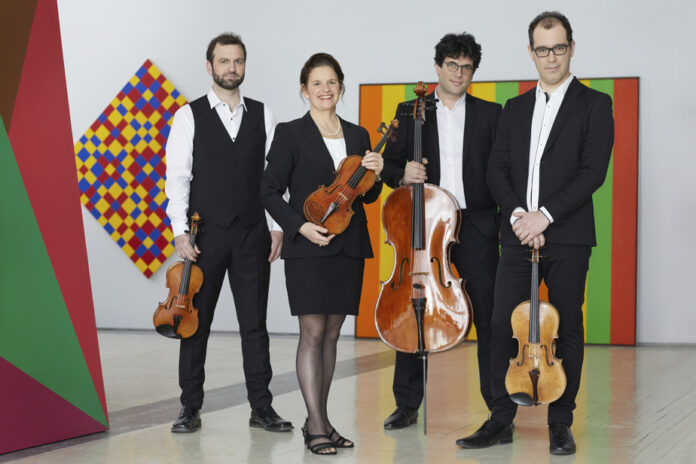Molinari is first and foremost the surname of a major player in Quebec pictorial modernity, but it is also the name of an essential chamber formation in our musical ecosystem. Meeting with violinist Olga Ranzenhofer, artistic director and founder of the Molinari Quartet, ahead of her concert on September 8 (7:30 p.m.) at the Conservatoire de musique de Montréal.
We can count on the fingers of one hand the number of full-time professional Quebec string quartets. Founded in 1997, the Molinari Quartet is one of the lucky ones. He is in his 27th season, a season that will take him to New York, Toronto and Vancouver.
“We have three rehearsals a week. It’s quite intense, because the music we make requires a lot, a lot of work,” explains the musician, the only original member of this ensemble dedicated exclusively to the repertoire of the 20th and 21st centuries.
An apartment upstairs from Ms. Ranzenhofer’s house serves as a haven for the quartet, who can then, in complete peace and quiet, unleash themselves on Shostakovich or Bartók in the shadow of the twenty or so Opus prizes won over the years.
An amplified metronome allows the group to stay on course through the twists and turns of the modern and contemporary repertoire. But this is not always enough. Especially in the works of Webern, which the Molinari will perform next March.
“Webern has a lot of beat changes, so it’s hard to follow with a metronome,” says the violinist. Pierre-Alain [Bouvrette, cellist of the quartet] makes us click tracks to manage the accelerandos and the sudden changes of tempo”. Clicks what? A track-metronome, as Guy Bertrand would say, in other words a recording of each beat of the work.
“We used it when we did Berio’s quartets, especially in a quartet that’s kind of like Webern to the power of ten: every bar changed tempo, metronome mark, or meter,” adds the director artistic.
But still, don’t they sometimes itch to bring out the little gems of Haydn and Mozart or the great pages of the latest Beethoven?
“The 20th and 21st centuries allow us to have a vast repertoire, very varied, which allows us to touch the great schools of writing and the great national schools. I don’t think we’re limiting ourselves, because we’ll never get to the end of everything that was written after 1900”, asserts, convinced, Ms. Ranzenhofer, who studied in the United States with the Quatuor LaSalle, a recognized specialist in this area.
“I learned a lot with the Quatuor LaSalle, among other things about the quartets of Webern. It’s Viennese music, “mit Schlag”, with cream! Don’t be afraid to vibrate and do glissandos,” she laughs.
“The danger is to have distance and coldness when making contemporary music, when that is not at all the goal of composers,” says the musician.
This is particularly the case in the Shostakovich quartets, of which the Molinari Quartet begins, next Friday (with Nachoff and Schafer), a long-term complete which will take it to the half-centenary of the death of the Soviet composer in 2025. a route that he had already completed in 2015 for his 40th birthday.
“It’s very formative to work with Shostakovich, because all the challenges of quartet music are there: intonation, rhythm, intensity, expression, colors…”
“When Shostakovich hits a triple forte, you hit the ropes!” she says. If there is a little crounch in the attack, it is not very serious, it must be like a stab in the heart. »
So, boring, contemporary music?















